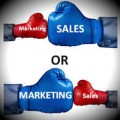Are you familiar with the sales funnel? I am guessing you are.
Are you familiar with digital advertising? I am guessing you have at least heard about it and many of you have probably already ran Adword campaigns.
What I realised a few weeks ago, when I was giving a presentation on digital marketing to a room full of entrepreneurs, is that very few used the sales funnel in conjunction with digital advertising.
Using the sales funnel with any advertising action will allow you to not only better design your campaign but also calculate the anticipated return from your advertising expense.
Digital advertising (excluding mobile) can come in the form of search engine advertising (e.g. Adword), social media (e.g. Facebook) or general web advertising. It can be done on a web page, within a video or a document (like a white paper).
The type of product/service, market conditions, the type of advertisement and its content will determine on what part of the funnel it is most effective.
Once you have determined on what part of the funnel you want to act on and the conversion rate you are seeking, you can chose the type of advertisement, the medium (web page or video), the ad content and format and the budget that will be best suited to reach your goals. You can also take it the other way around and start with the budget you have and determine your course of action from there.
Your typical conversion rates from one section of the funnel to the next, the lifetime value of your customers[1], along with a starting point estimate of the number of potential customers coming into your funnel, will help you determine the approximate returns you can anticipate from your digital campaign.
Here is an example to help you understand how you could apply this method on your next digital advertising campaign. Please keep in mind that the numbers used in the following example are not representative of anything. The truth is that the average conversion numbers you may see on the web have absolutely no statistical significance. Dozens of factors affect conversion rates. The only numbers you should rely on to see if you’re doing well or not are your own historical metrics.
We’ll start by going through the stages of the sales funnel. First your potential customers must know that your online store exists. Then they need to understand what you have to offer. Those who are interested by your offer will consider whether or not they want to purchase. The ones who have decided to purchase your product/service have to act on their decision and purchase.
Let’s sa y you are at a point where you wish to focus your marketing campaign at convincing customers your product best suits their needs and having them buy from you (usually why one does an advertising campaign).
y you are at a point where you wish to focus your marketing campaign at convincing customers your product best suits their needs and having them buy from you (usually why one does an advertising campaign).
- Your net analytics historical data (I am referring to data that has been scrubbed of all the false traffic which may account for up to 85% of your raw traffic numbers) has allowed you to track as a cohort[2], 1000 unique visitors.
- Out of those, 650 did not bounce.
- From those 650, 300 have acted in a way that shows interest (signed up to a newsletter or promotion, downloaded a document, etc.).
- Out of these 300, 60 are considering your product (they have gone to a product page, have asked questions via your IM function, etc.).
- Out of those, 40 have shown intent to purchase (opened an account, started a shopping cart, downloaded a coupon code, etc.).
- Finally, half of those who intended to buy from your site made a purchase. These metrics give you your conversion rates from one stage of the funnel to the next.
To get to your conversion rate you simply divide the bottom stage data with the data from the stage right above it and multiply it by 100.
Now that you know what stage of the funnel you are targeting (intent and purchase), and you have your conversion rates and lifetime customer value, you are all set to pick the best advertising tool and estimate your returns.
You analytics data can show you characteristics of past visitors who converted on the consideration, intent and purchase stages. Using this data, you can target potential customers with similar characteristics. The characteristics will give you clues as to what advertising platform will be the most effective. Are your visitors in the consideration, intent and purchase stages, mostly women aged 17-25, who have interest in family and food? You may want to take a look at advertising on Pinterest or Facebook. Adwords can also target such an audience if you don’t think social media platforms are right.
Adwords can give you an estimate of how many clicks you can expect with a fixed budget and the profile (keywords) selected. Use this data, along with your conversion rate and your customer lifetime value to estimate the revenues you can expect from your campaign. Chose the platform that will give you the best returns on your advertising expense. The figure below shows the calculations for this example.
 In this example, any marketing campaign that costs you less than 5 000$ (you may want to give yourself a positive margin of error to ensure you don’t have negative returns) will add value to your company.
In this example, any marketing campaign that costs you less than 5 000$ (you may want to give yourself a positive margin of error to ensure you don’t have negative returns) will add value to your company.
Finally, when you are starting your company, these calculations are far from exact. Only experience will increase your precision. The sooner you start calculating your marketing action ROI the sooner you will get good at it. You will get an understanding of the data that will incite you to start improving your CLV and conversion rates.
Have you started using the sales funnel to improve your web advertising efficiency yet? What are you waiting for?
[1] The simplest formula to calculate Life-time customer value (LCV) is LCV = total gross sales revenue of period X/number of unique customers during period X. There a many other formulas to refine this metric.
[2] A cohort is simply a group of visitors that you tag in your analytics software as a group so that you can apply data to the entire group. There are multiple variables by which you can identify a cohort. One of the most popular is the period during which they visited your website.









